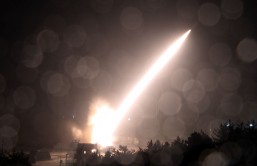Scientists have discovered a black hole that remained dormant for over two decades has "woken up."
A team of researchers used ESA's Integral satellite to observe an incredible outburst of high-energy light produced by a giant black hole, the European Space Agency (ESA) reported.
The star system observed in the study, dubbed V404 Cygni, is made up of a black hole and binary stars orbiting one another. In this type of system, material flows from the star into the black hole and gathers in a disc. The material is then heated up, creating ultraviolet and X-ray wavelengths before being gobbled up by the black hole.
The first signs of renewed activity from the black hole were spotted by the Burst Alert Telescope on NASA's Swift satellite, and recently afterwaerds part of the Japanese Experiment Module on the International Space Station noticed and X-ray flash in the same region. Now, ESA's Integral gamma-ray observatory is keeping a close eye on the recently-awoken black hole.
"The [behavior] of this source is extraordinary at the moment, with repeated bright flashes of light on time scales shorter than an hour, something rarely seen in other black hole systems," said Erik Kuulkers, Integral project scientist at ESA. "In these moments, it becomes the brightest object in the X-ray sky - up to fifty times brighter than the Crab Nebula, normally one of the brightest sources in the high-energy sky."
This type of activity has not been seen from this particular black hole since 1989, when the Japanese X-ray satellite Ginga and high-energy instruments on board the Mir space station noticed its X-ray flashes.
"The community couldn't be more thrilled: many of us weren't yet professional astronomers back then, and the instruments and facilities available at the time can't compare with the fleet of space telescopes and the vast network of ground-based observatories we can use today. It is definitely a 'once in a professional lifetime' opportunity," Kuulkers concluded.








